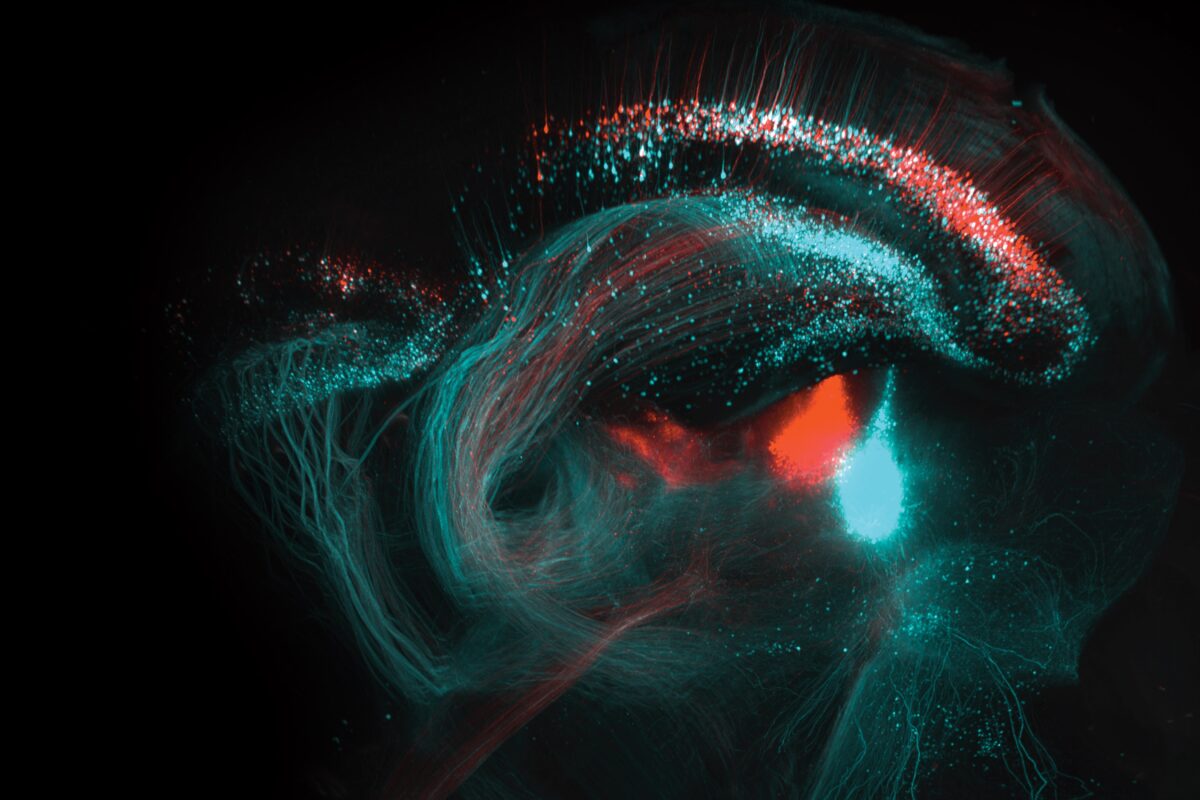
Inside our heads sits the remarkable human brain, a frontier of biology that still holds many secrets. This incredible organ consists of 86 billion neurons connected by a staggering 100 trillion synapses, numbers so vast that they surpass the number of stars in the Milky Way.
All of our thoughts and the motivations underlying all of our actions are generated by our amazing human brain,” said Michael S. Avidan, MBBCh, the Dr. Seymour and Rose T. Brown Professor and head of the Department of Anesthesiology. “We will never fully understand ourselves until we understand how our minds work and how our brains work. Because those are questions that are at the core of who we are.”
“The human brain is a universe within us, and understanding its complex geography is a grand adventure of our time.”
David C. Van Essen, PhD
Understanding the brain — when it functions normally and when it doesn’t — is one of the most pressing challenges in the fields of neuroscience and medicine today, with profound implications for our well-being and scientific advancement.
“If we can unravel the mysteries of the brain, even partially, we could help millions of people who are suffering today from neurological disease and mental illness,” said Eric J. Lenze, MD, the Wallace and Lucille K. Renard Professor and head of the Department of Psychiatry.
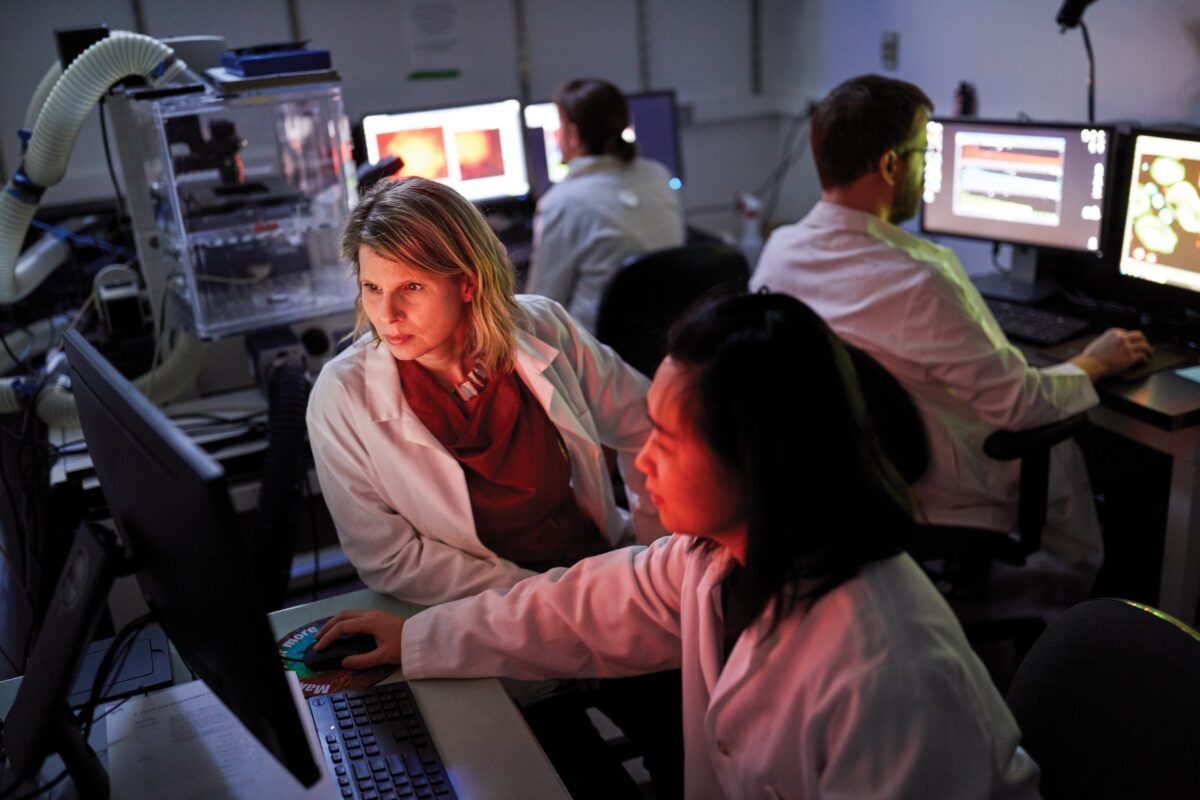
In the U.S., about 6 million struggle with Alzheimer’s disease, the top cause of dementia, and over 11 million serve as their unpaid caregivers. These numbers will double as our population ages. Also, one in five adults is living with serious mental illnesses, such as major depressive disorder. Meanwhile, another million people grapple with movement disorders, such as Parkinson’s disease, losing bodily control over time.
The challenges in treating neurodegenerative disorders and mental illnesses are immense. Their causes and mechanisms often are elusive, and they manifest differently in each individual. However, decades of meticulous research and technological advancements are yielding promising results. Washington University School of Medicine is at the forefront of this groundbreaking research.
Among other advancements, WashU Medicine researchers are: visualizing brain activity and connections via neuroimaging; mapping the brain’s network of connections; applying machine learning to analyze complex data and predict cognitive outcomes; understanding the brain’s neuroplasticity and ability to adapt; uncovering genetic factors underlying neurological and psychiatric disorders; creating brain-computer interfaces and neuromodulation devices; using regenerative stem cell therapies to treat brain diseases and injuries; and focusing on the neurobiology of mental health conditions.
In recent years, two breakthrough discoveries pioneered here — a brain-computer interface to aid stroke patients in regaining hand and arm function and a blood test for early Alzheimer’s disease diagnosis — have entered the market.
In this moment of promise, the institution is rallying its strengths to combat neurological and psychiatric diseases. “Washington University School of Medicine wants to change the world,” Avidan said. “We want to change the world in fundamental ways that alter our understanding, create fresh insights, and enable people to live better and more fulfilling lives.
“And the key to that is neuroscience. Your brain is fundamental to your health, to your identity, and to your reason for living. By addressing the profound mysteries underlying the functions of the brain and the emergence of the mind, we’ll be able to transform the way people live,” he added.
Building momentum
To accelerate this progress, WashU Medicine recently opened the Neuroscience Research Building (NRB) — a 609,000-square-foot, 11-story facility — at 4370 Duncan Ave. The university invested $616 million to construct the building, the largest and most expensive in the medical school’s history. The investment was driven by leaders’ belief that the building will become one of the nation’s premier neuroscience research hubs.
“This is an enormous investment, even by Washington University’s standards,” said Andrew M. Bursky, chair of the university’s Board of Trustees. “But we believe there is no field in medical science with greater opportunity than brain science and no place in the world with greater capability or vision to pursue these opportunities than Washington University. Yes, this is a venture of immense proportions, and yes, it carries risk. But it is a risk we eagerly embrace.”
Bursky added that David H. Perlmutter, MD, executive vice chancellor for medical affairs and the George and Carol Bauer Dean of the School of Medicine, convincingly made the case that this investment in neuroscience can address some of our most critical societal challenges, including atypical childhood development, mental health and the effects of aging.
“I came to WashU because I knew it was home to the most cutting-edge work and the most creative scientific minds,” explained Perlmutter, also the Spencer T. and Ann W. Olin Distinguished Professor. “Right now, there is a lot of momentum around neurosciences, one of our areas of considerable strength. It was clear to everyone that we have a fantastic opportunity to strategically leverage our deep bench in this area to bring about a true sea change in our understanding of the brain, the nervous system and the devastating neurological diseases and disorders that touch every family and community across the globe.
“This building represents not only our investment in neuroscience research more broadly but also our urgent commitment to bringing the finest minds and tools together to find groundbreaking treatments and therapies.
“When you talk to any of our faculty, there is real passion for this vision, and there is excitement because we can see real hope for transformation in our lifetime. I want to see WashU remain at the forefront of this transformation,” Perlmutter added.
The building’s design further promotes cross-disciplinary collaboration, something that has long been intrinsic in WashU Medicine culture. More than 1,000 researchers on 120 research teams — previously scattered in 16 Medical Campus locations — now work in the same building. The space unites experts in neurology, neuroscience, neurosurgery, psychiatry, anesthesiology, radiology, genetics and developmental biology, who will leverage their collective expertise to probe the mind, brain and body and heal what is broken.
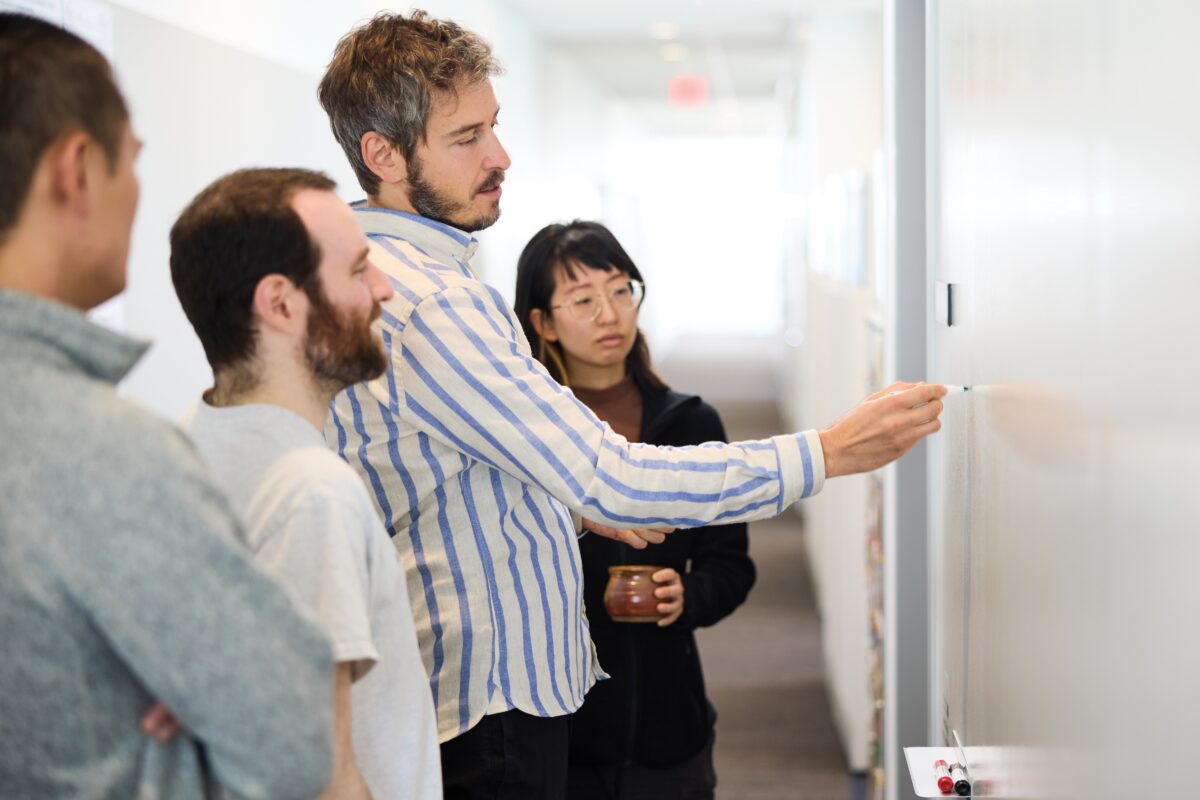
“With this new building, we are able to offer the neuroscience community a central home and a laboratory environment that can inspire entirely new concepts that allow us to grasp a much deeper understanding of the brain and have a global impact on health and science,” said Chancellor Andrew D. Martin.
The building is organized by research themes, such as neurodegeneration, brain tumor biology and pain, rather than department affiliation. These themes advance areas of existing strength and holistically address critical challenges. The research building will house one of the world’s highest concentrations of neuroscientists. By arranging them strategically to foster collaboration, new synergies will naturally arise.
“The real power is having people with different perspectives and expertise working side by side,” said Linda J. Richards, PhD, the Edison Professor of Neurobiology and head of the Department of Neuroscience. “You can’t help but generate new ideas and new approaches to solving problems. That is where you get real scientific power,” she added.
This expansion also will open doors to collaboration and innovation for graduate students and faculty at all levels and significantly enhance educational opportunities.
Accelerating treatments
The ultimate goal of biomedical neuroscience research, of course, is not just to understand how the nervous system works, but to heal and protect it. And translating WashU Medicine findings into real-life clinical applications will help St. Louis’ future economic health, too. Developing commercially viable therapeutics and technologies will play a key role in regional growth.
To facilitate such efforts, WashU Medicine leaders positioned the new building in the 200-acre Cortex Innovation District on the eastern edge of the Medical Campus. Cortex is one of the fastest growing business, innovation and technology hubs in the U.S. and home to numerous biotech startups founded by Washington University faculty, staff and students.
Jeffrey D. Milbrandt, MD, PhD, the James S. McDonnell Professor of Genetics, has a track record of translating basic discoveries into clinical applications. In 2017, he and Aaron DiAntonio, MD, PhD, the Alan A. and Edith L. Wolff Professor of Developmental Biology, co-founded Disarm Therapeutics. Their objective: to create drugs targeting axonal degeneration, a disease process that underlies numerous neurological disorders. Such treatments potentially could help millions of patients with debilitating nerve damage caused by various conditions. Notably, Eli Lilly and Co. acquired Disarm in 2020.
“When Aaron and I started Disarm, we had no real option other than to start it on the coast,” Milbrandt said. “But with the rapid growth and transformation of the Cortex Innovation District over the last several years, it’s easier for startups to stay here in St. Louis. The location of the NRB in Cortex creates opportunities for WashU Medicine neuroscientists to make connections with people at companies there and facilitate the transition from discovery to implementation through starting companies.
“Not only will this new building speed up the translation of discoveries into patient care, it will strengthen St. Louis’ position as a hub for biomedical innovation,” he added.
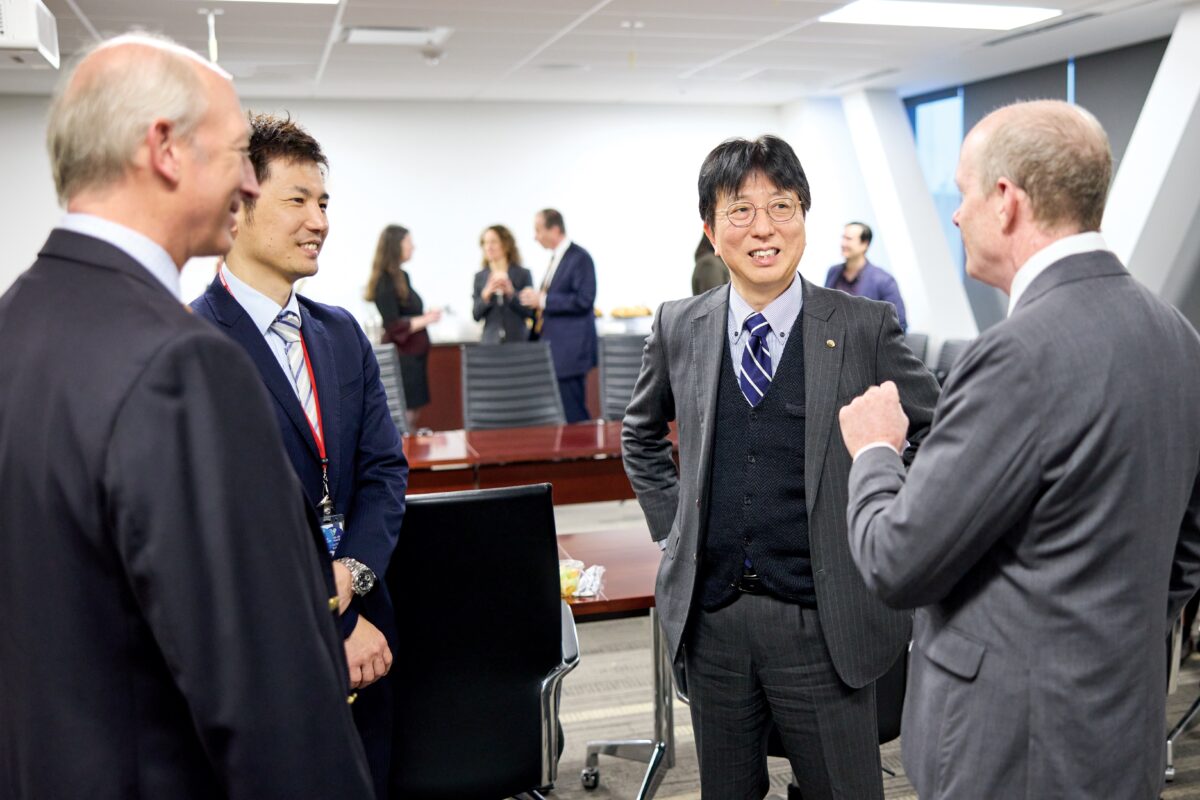
By taking advantage of complementary strengths, such alliances — locally and internationally — could accelerate progress toward new treatments. One such collaboration is already in place between WashU Medicine and the pharmaceutical company Eisai Co. Ltd., headquartered in Japan, to develop new treatments for Alzheimer’s disease, Parkinson’s disease and other neurodegenerative conditions.
The NRB opened its doors in August. As the labs establish themselves in the building, they will begin to form connections — synapses, if you will — with neighboring labs.
“By bringing together so much knowledge, talent and passion, this new facility will make it considerably more likely that people will have the kinds of water-cooler discussions that lead to interdisciplinary game-changing ideas and projects,” said David M. Holtzman, MD, the Barbara Burton and Reuben M. Morriss III Distinguished Professor. “I’m very excited to see what we will do.”
Neuroscience research highlights
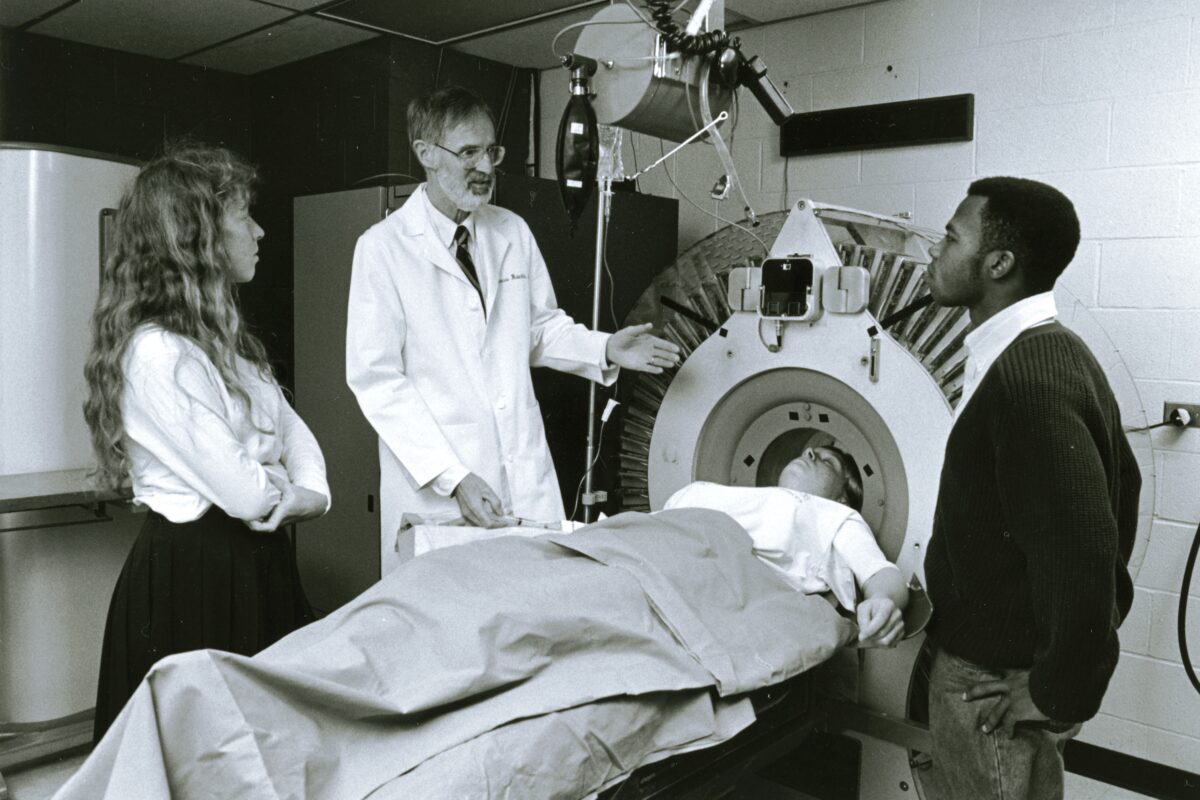
Washington University researchers:
- Developed screening tests used worldwide to diagnose Alzheimer’s disease.
- Created the first positron emission tomography (PET) scanner to show how the brain and other organs function.
- Performed the first nerve transplant using tissue from a cadaver donor.
- Identified the triggers of nerve degeneration involved in conditions, including Parkinson’s disease, amyotrophic lateral sclerosis (ALS), multiple sclerosis (MS), glaucoma and peripheral neuropathy.

Through ongoing research, they are:
- Leading a global effort to map major brain circuits and identify their connection to brain disease.
- Exploring the genetic influences at play in alcohol, smoking and drug addiction.
- Developing new ways to diagnose and treat stroke and aneurysm.
- Leading an international collaboration to study inherited forms of Alzheimer’s and evaluating ways to prevent or delay onset of the disease.
- Investigating ways to create and improve nonaddictive treatments for chronic pain.
Published in the Winter 2023-24 issue


